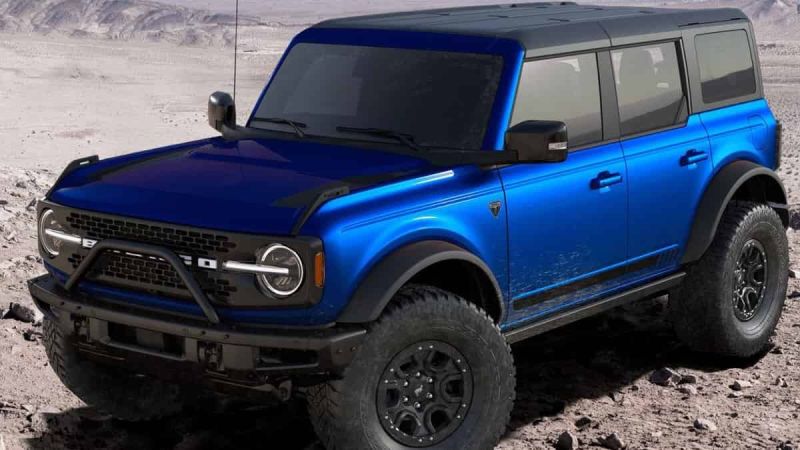For a long time, the mantra of car enthusiasts seeking more power from their four-wheeled chariots was better breathing. To achieve it, they usually increased the size of the carburetors under the hood. Or, they added more barrels to the carburetor array.
Mechanical Aides Can Only Do So Much
They reached a point of diminishing returns where more barrels or carbs didn't make any sense. So, they turned to either turbocharging or supercharging (honestly, two sides of the same coin). Most of the time, they supercharged their buggies to get more go-power out of them. It makes sense. By plugging in a supercharger, they could achieve immense gains in power for very little loss. The supercharger's power more than made up the counterargument that superchargers used lots of extra fuel never did seem to apply as any losses in power.
This wasn't the case. To agree with opponents of supercharging, you do lose a few horsepower ultimately because the supercharger that runs on its mechanical network in an engine uses between 10 and 20 horsepower. It's not a showstopper, but it is noticeable if you are looking for it. You will find that dynos that measure power at the wheel will note the presence of a supercharger. That's all well and good, but if the supercharger is doing its job correctly, the engine output gains overwhelm any argument regarding output. (Turbocharging is quite similar to supercharging, but there is no mechanical linkage between the impeller and the manifold. Honestly, the full name of turbocharging is turbo supercharging. The key difference being the linkages needed to work correctly. More on that later, however, suffice to say it is another way of increasing output.)
Through the late 1990s and into the 2000s, there was a significant change in engines. Digital microcomputers took over engine control functions. For example, fuel-metering became digitally controlled as a function of the engine control computer (ECC). The ECC monitors various inputs that affect performance – throttle response, fuel needs, braking, transmission response, and the like.
Digital Revolution Catches Up With Vehicles
Before the advent of microcomputing, these inputs used mechanical control. As compared to the computer control era, it was pretty basic. The carburetor controlled how fast the vehicle moved. It responded to the throttle to the gas pedal-linked pedal. That was the control circuit.
Meanwhile, engine control moved toward fuel injection. However, it still used a mechanical linkage that responded to the gas pedal, though emissions control had become part of the mix with the EGR valve's addition, though it was still mechanical.
By the early to mid-1990s, the changeover to digital control was complete, though limited, as the ECCs of that era tended to look at large numbers and averages that were not as precise as they would become by the year 2005. Indeed, though computers controlled the engines of the early 2000s, their numbers were limited.
By 2010, the number of computing modules reported to the ECC had doubled as control became much more precise. The issue for automakers and federal officials who oversaw things like emissions was simple. Indeed, it was just two words: "hands-off.!" In other words, do-it-yourselfers, shade tree mechanics, enthusiasts, and everyone who cared about things automotive, found engines were, more or less, sealed.
Casual User Steer Clear Of Engine
For casual users, this was all that was needed to convince them to stay out of the engine bay (in the good old days, they might have tried their hands at various aspects of do-it-yourself, including adding things like new carbs and such. However, since there were few opportunities for casual users and even more advanced vehicle enthusiasts, they tended to stay out of the engine bay.
Indeed, to this point, it looked as if the officials had achieved their goal of the "sealed" engine. And, as noted, for casual users, it had achieved that aim. But, there was one area that enthusiasts could take advantage of, the ECC chip itself. Enthusiasts could find different parameters online to reflash the programmable ECC chip to increase a vehicle's power. At once, they found they could give their vehicles boosts of power that used to be associated with the installation of lots of engine plumbing and hardware.
So, a vehicle enthusiast who wanted more power out of the installed four or six-cylinder engine could pull out the ECC, reflash it, changing things like the horsepower curves for more output and make their powerplants more powerful and responsive. This is the exact outline followed by Vivid Racing, one of the first tuning teams to take one of the hottest SUVs on the market now, the Ford Bronco Sport. My colleague Jimmy Dinsmore discusses the issue of Ford partnering with major firms as it adds parts.You'll get an interesting view in the following video.
Vivid not only took on the Bronco Sport. However, rather than starting at the bottom of the pricing points, it went right to the top using a stock Badlands/First Edition model. The tuning outfit popped the ECC out of the 2.0-liter EcoBoost four, and they reflashed the ECC to increase the engine's power.
The Reflash Certainly Didn’t Hurt Performance
Did the Bronco Sport need the reflash? Well, according to a piece on The Drive, the tuners found that the engine cranked out 186 horsepower at the wheels and 246 pounds-feet of torque. The figures differ markedly from factory specs which showed 249-250 horsepower and 275 pounds-feet of torque. The big difference in horsepower/torque is simple to explain. We suspect the horsepower/torque readout on the stock engine resulted from a reading or reading the transmission. Vivid took its readings at the wheels on a chassis dyno.

After the team at Vivid worked on the reflash, the engine had much better specs. The numbers jumped to 222 horsepower and 300 pounds-feet of torque at the wheels. Translating that to the crank would increase 55 horsepower and 75 pounds-feet of torque, or 305 horsepower and 350 pounds-feet of torque at the crank.
We will grant that the numbers aren't all that spectacular, though they are much better. The key to the reflash is what it does to the midrange and for throttle response. Vivid found that after the reflash, midrange power was much better. Throttle response after the reflash was much sharper.
No Mention Of Performance
Interestingly, there was no mention of how the reflash affected road performance as there was no mention of how the Bronco Sport reacted on a 0 to 60 run or a quarter-mile run after the reflash.
Marc Stern has been an automotive writer since 1971 when an otherwise normal news editor said, "You're our new car editor," and dumped about 27 pounds of auto stuff on my desk. I was in heaven as I have been a gearhead from my early days. As a teen, I spent the usual number of misspent hours hanging out at gas stations Shell and Texaco (a big thing in my youth) and working on cars. From there on, it was a straight line to my first column for the paper, "You Auto Know," an enterprise that I handled faithfully for 32 years. Not too many people know that I also handled computer documentation for a good part of my living while writing YAN. My best writing, though, was always in cars. My work has appeared in venues including Popular Mechanics, Mechanix Illustrated, AutoWeek, SuperStock, Trailer Life, Old Cars Weekly, Special Interest Autos, and others. You can follow me on: Twitter or Facebook.













Comments
Does anyone have model, info
Permalink
Does anyone have model, info regarding the transmissions used in the new Bronco? Thinking in terms of other auto tranny issues Ford has had over the last several years. I use to own a Ford Focus w/ the 6-speed auto - horrible... Thanks!